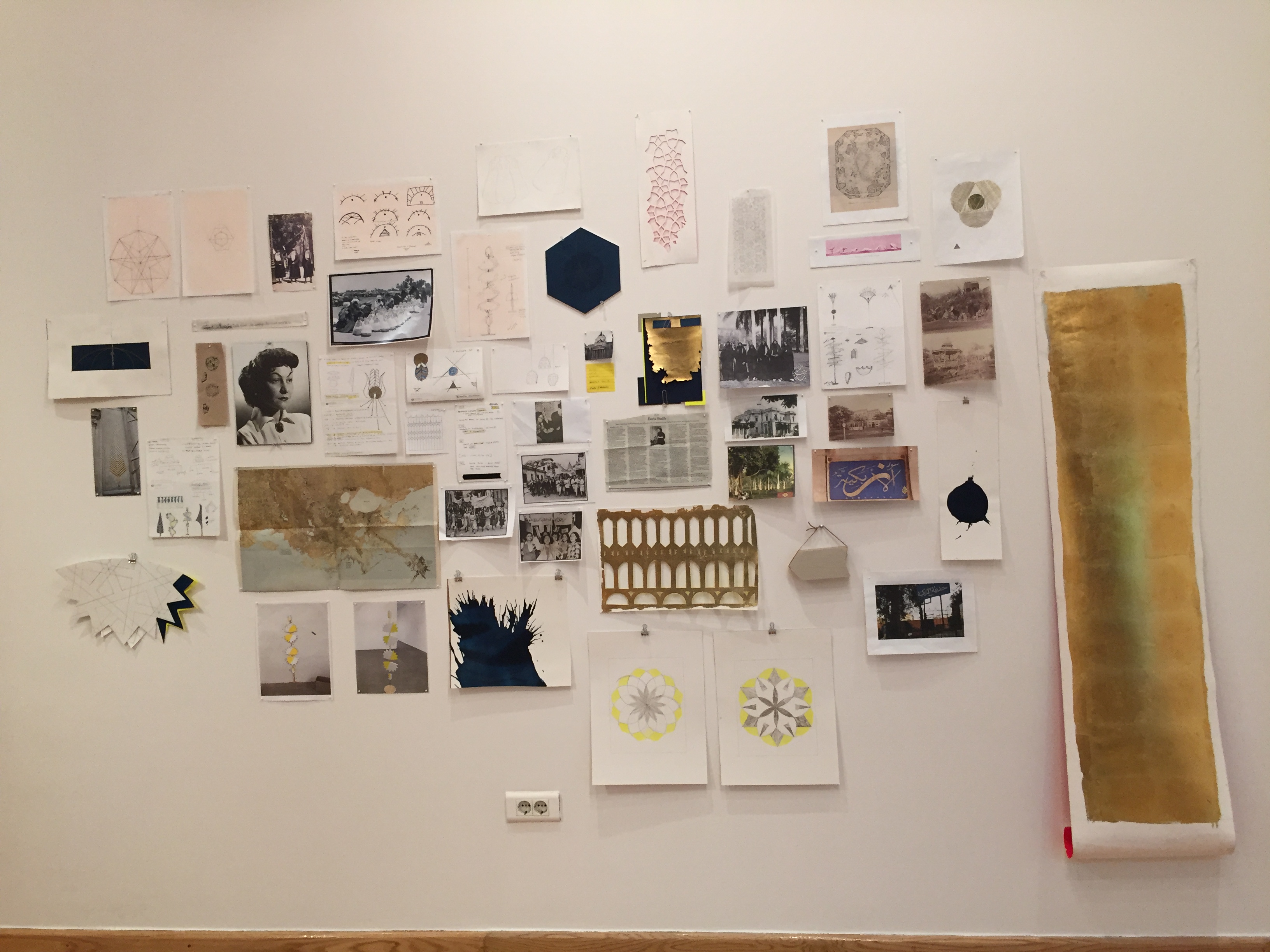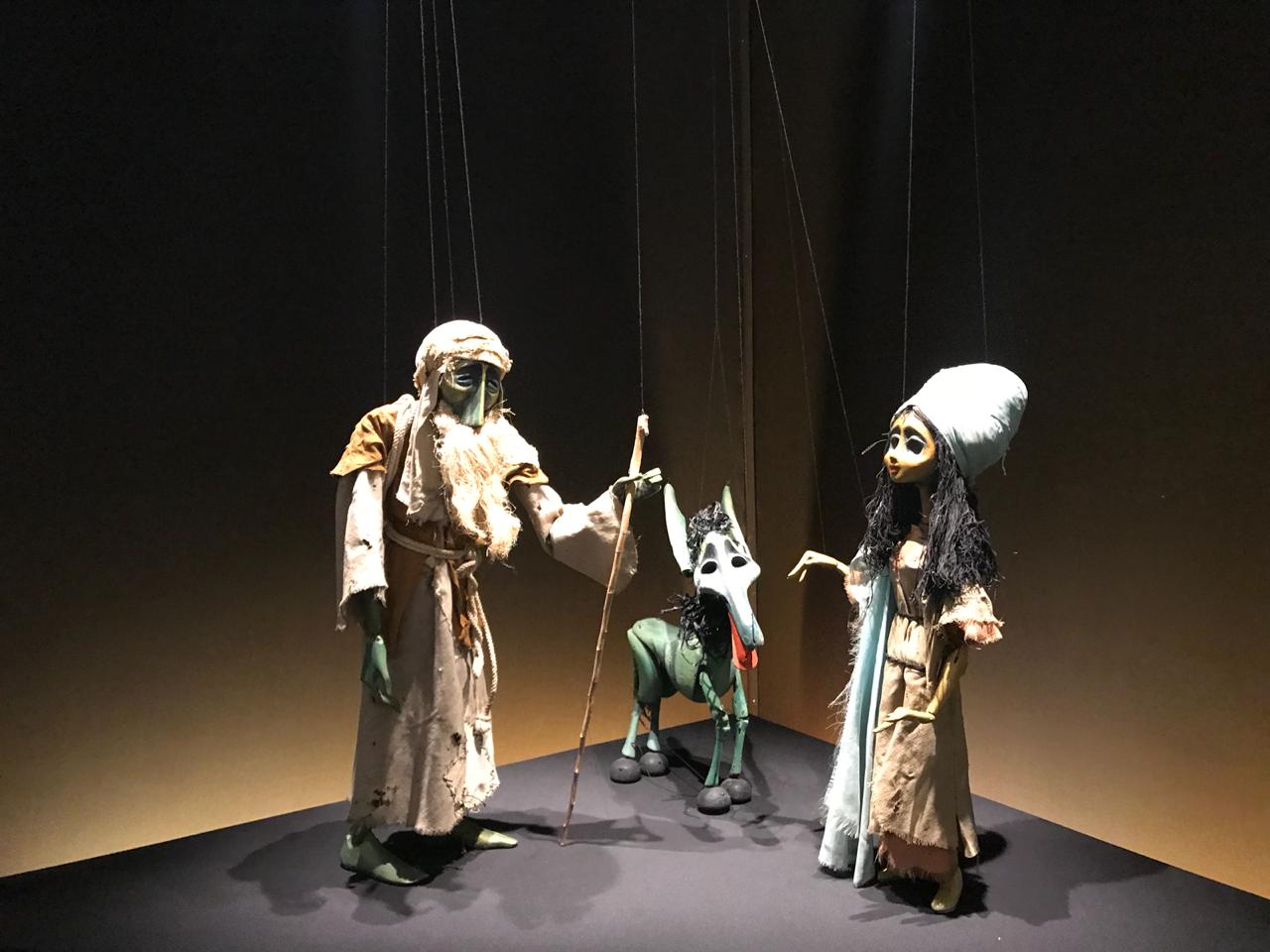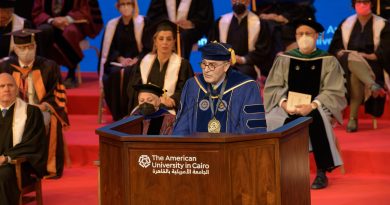Tahrir Cultural Center Celebrates Feminist Icon Doria Shafik
By: Monica Naguib
@MonicaNaguibb
In the Bent El-Nil (Daughter of the Nile) exhibit, which opened February 6 through to February 28 at the Tahrir Campus, artist Sherine Guirguis manages to capture the bravado and spirit of late Egyptian feminist, poet and activist Doria Shafik.
Shafik was one of the main leaders in Egypt’s Women Liberation Movement which paved the way for granting women the right to vote.
Los Angeles-based Guirguis spent two years researching Shafik and connected to the women’s icon by converting the poetics and feminist principles into her own language.
In Bent El-Nil, one of the first exhibits to be hosted by the Tahrir Cultural Center as part of AUC’s Centennial celebrations, Guirguis revives Shafik’s struggle through various artwork, including architecture and paintings, highlighting her contribution to 1940s and 1950s Egyptian society.
A main staple of her artwork depicts Shafik’s February 1951 march – with 1,500 women accompanying her – to the Egyptian Parliament to demand voting rights.
Guirguis said that what inspired her the most in Shafik’s story was “her resilience and persistence to continue to fight for women’s liberation”. Guirguis was also moved to recapture the strength of the Egyptian feminist movement and to ensure that the struggles and successes of these great women not fade from memory.
“I hope that people re-engage with Doria’s important work and that we don’t forget our own history,” Guirguis said.
The artwork is divided into two galleries: Future and Legacy. In the Future Gallery, the artwork, entitled The Storming Parliament, is a three-series painting in which Guirguis depicts the design of parliament gates through deep lapis blue ink, a colorful allusion to the Nile River.
Sun Disk, on the other hand, depicts the parliament building itself using hand-cut paper, acrylic paint and gold leaves.
“The way she expresses freedom in her artworks beside her choice for Doria Shafik are both extremely unique and well-combined,” said Armenian-Egyptian visual artist Vahan Telpian.
The Legacy Gallery is a separate section consisting of a collection of Guirguis’ old family photographs in Luxor and portraits of Shafik, some of which are rare and had never been on public display. It also displays passages from Shafik’s writings, architectural photographs, and experimental drawings.
Having Shafik’s own photos on display is one of the ways in which Guirguis showed how both of their lives and views are connected.
The two galleries are different in their artistic representations. The Future Gallery displays pure artwork by Guirguis while the Legacy Gallery is a combination of Shafik’s personal items and Guirguis’ artistic touch.
“They all touch on different parts of Doria’s life and work,” Guirguis said about the artwork.
Most of the visitors to the galleries were students at AUC or local visual artists.
“Although I walked in by coincidence, I was amazed by the artwork and would like to know more about the artist,” accounting senior Mostafa Darwish said.




